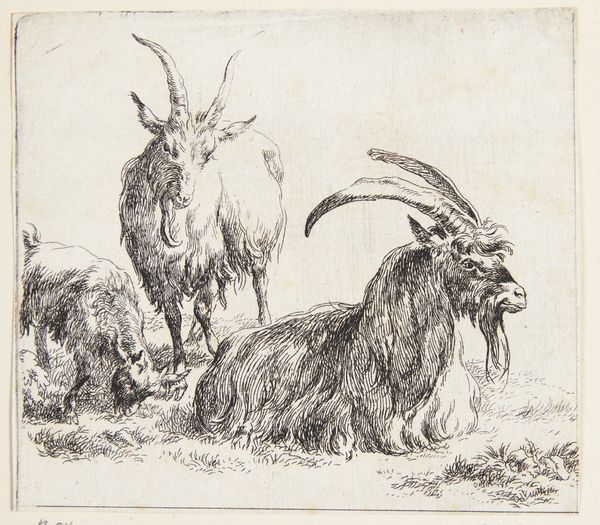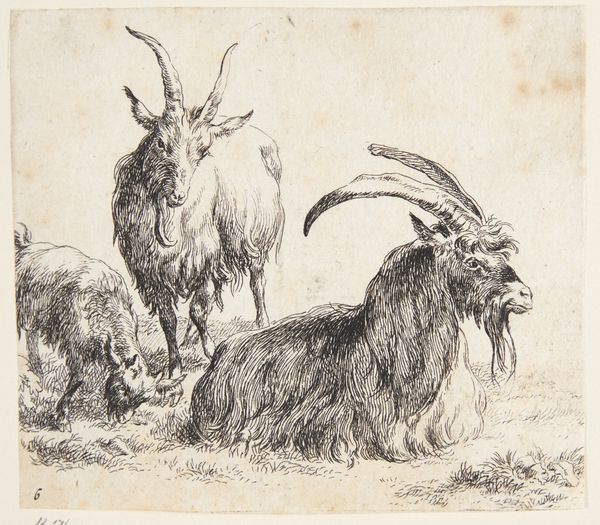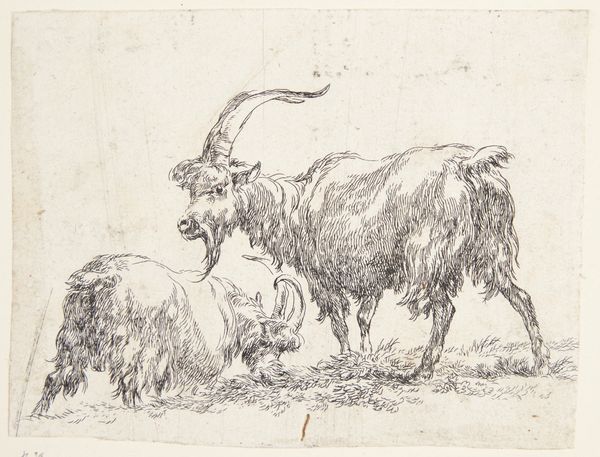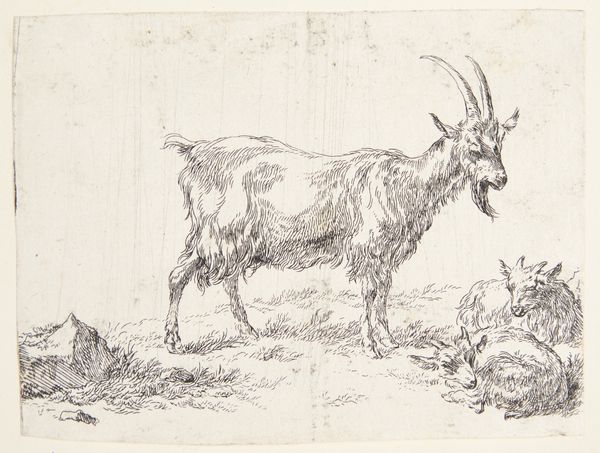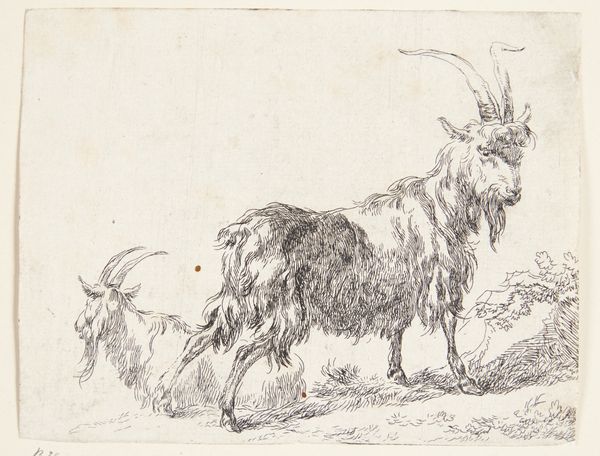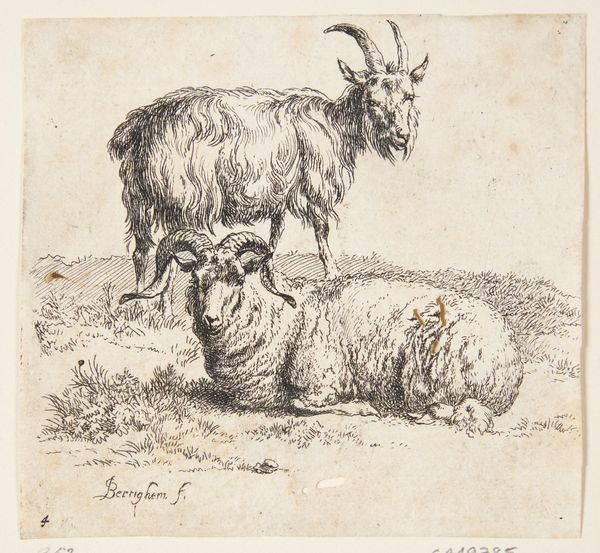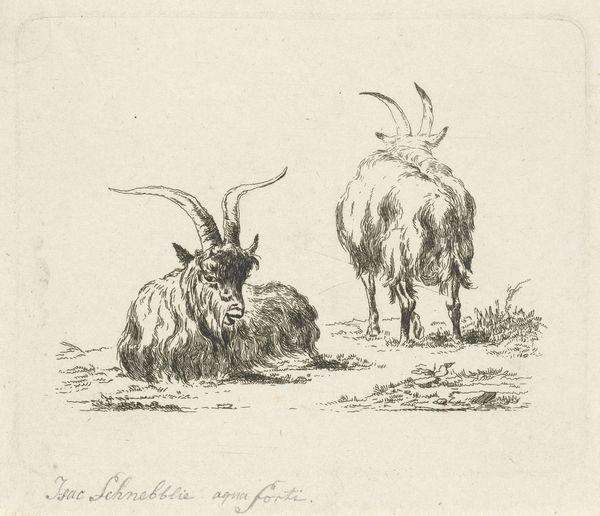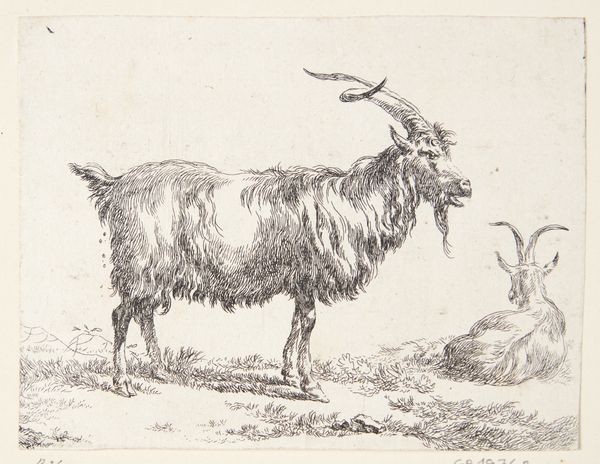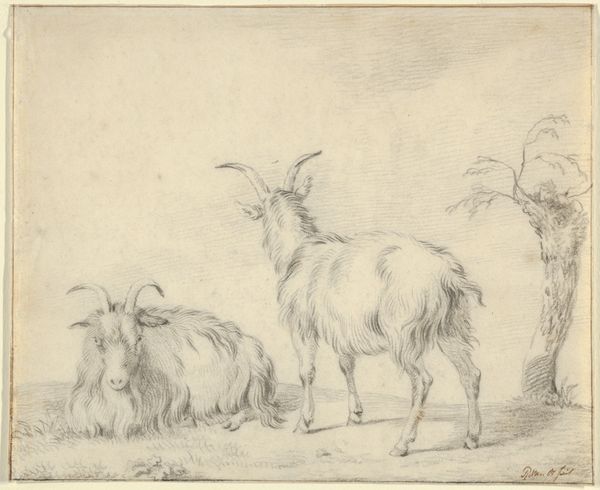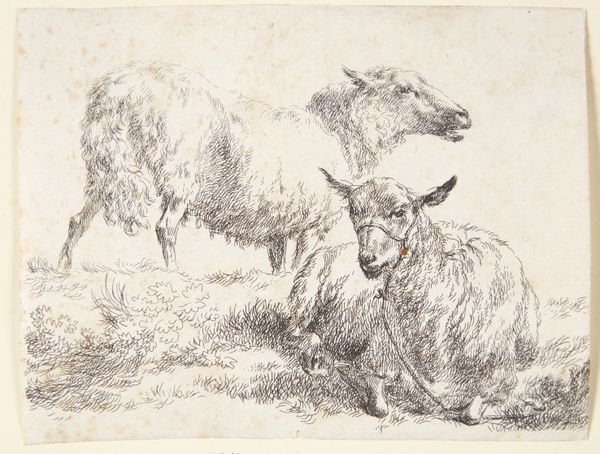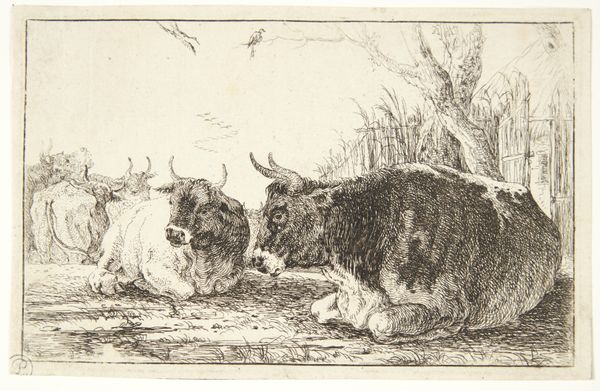
En liggende ged og en stående ged set bagfra 1620 - 1683
0:00
0:00
print, etching
#
baroque
#
animal
# print
#
etching
#
landscape
Dimensions: 98 mm (height) x 130 mm (width) (bladmaal)
Curator: So, we're looking at "A Lying Goat and a Standing Goat Seen From Behind," an etching by Nicolaes Berchem, dating roughly from 1620 to 1683. It's currently housed here at the SMK. What's your immediate take? Editor: It feels strangely peaceful, almost meditative. The etching technique lends a kind of gentle softness to the goats' fur, doesn't it? And there's this inherent humor seeing a goat's rear end taking center stage. Curator: Berchem was deeply invested in exploring the relationships between the pastoral, the market, and emerging ideas around landscape. Think about the context: Dutch art was increasingly shaped by commercial interests and rising consumerism. Etchings like these served a dual purpose. Editor: You mean they were both artworks and, essentially, commodities? Curator: Precisely. The reproduction potential of printmaking allowed Berchem to reach a wider audience than, say, a unique painting. But let's consider the etching process itself. The marks, the deliberate construction…it points to a democratization of artmaking. He trained in Haarlem, surrounded by masters but also journeymen and print shops churning out images. Editor: That etching! It reminds me of summer days and animal smells—hay and fields after the rain. It is bucolic poetry. Also, have you noticed how Berchem’s lines bring life into them? I want to pet them so much, which is insane. Curator: Right, that sense of accessibility. Also it served specific economic functions. Landowners wanted images of their estates, of livestock and agricultural prosperity. A print was accessible even if the landowner's wealth wasn't shown on their face directly in the form of portraiture. The artwork served this function. The image of animal could communicate status and social standing through imagery of landscape. Editor: You are always analyzing from above. I understand that perspective, I am an Editor. What the landscape says to us. For me it's simpler, about those curves on the goats and shapes created through lines that capture the movement and presence. It's beautiful because of its immediacy and raw expression. Curator: It all coexists. It is not about which perspective takes prevalence. His choice of etching—relatively accessible, reproducible—suggests an understanding of his target market. Even the seeming casualness with the animal anatomy fits this frame of "approachability." It does give the impression to buyers that their art can become real and personal, but within their budget. Editor: Fair point. It just goes to prove art hits differently depending where you’re standing, or lying, like our friend here. I have this feeling he could speak any moment, with the words of a thousand summers. Curator: And maybe, too, an understanding that beauty and art, is about to shift, influenced by new means of material production.
Comments
No comments
Be the first to comment and join the conversation on the ultimate creative platform.
